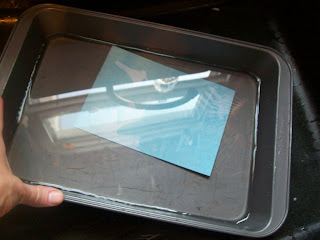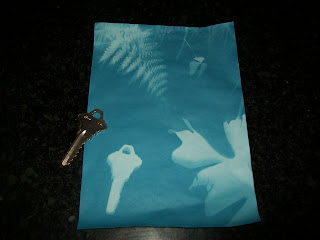When I asked one of my friends in book club if she had a black light, not only was she at all surprised by the question from me, but she had a nice hand-held black light.
I was making glow in the dark jello in honor of the book we'd read for that month - it had a cover that glowed in the dark.
Now jello doesn't glow normally, but wait. This is a crazy fun activity to do but it does take some special ingredients. Here's what you need:
Jello - pick two colors to see if one glows more. I found one color glowed more - who knew!
Tonic Water - check for quinine, you need it
A black light
I used melon and apricot flavors since I was taking this to my book club.
I mixed the jello according to directions by mixing it with the hot water first and then using the tonic water instead of the cold water.
There was a lot of foam on the jello even after letting the tonic water sit for a while.
And the jello glowed just as advertised. But how did it taste?
The overwhelming review was thumbs up. Most of the folks on Pintrest suggested whipped cream and found that was a key addition. The jello is slightly bitter from the quinine but that makes a very refreshing treat for a hot day. The whipped cream was a lovely way to smooth it out without making it too sweet.
And one color did glow more than the other. Care to guess which one glowed more?













